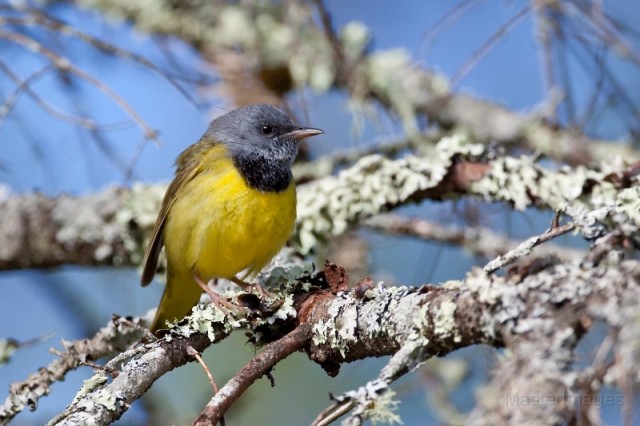The other day, I helped lead a birding trip for The Wild Center to Massawepie Mire west of Tupper Lake. Massawepie is the largest boreal peat land in the state, and it offers great habitat not only for boreal bird species such as gray jays and breeding olive-sided flycatchers, but its complexity of habitats make it great for many species which breed in deciduous and coniferous forests as well.
Unfortunately, our trip fell on an unseasonably cold, wet day, and we were all consistently chilled and dripping. But our group of participants was game to explore without complaint, and we enjoyed a great day out.
We started our day by exploring the deciduous forest along the windy dirt road which leads to the access for the bog. Even though fewer birds were singing due to the rain, we found a nice mixed feeding flock at the boat launch on Massawepie Lake which included northern parula, blackburnian warbler, black-throated green warbler, pine warbler, black-capped chickadee, and golden-crowned kinglet.
We carpooled down the road to the old railroad bed which cuts across the bog itself, but started with a short walk to a small stream crossing where several chestnut-sided warblers were singing and gave us nice looks. Yellow-rumped warblers were also scattered in the trees along the stream – as they were elsewhere during our day – and a pileated woodpecker flew low above the trees across the stream opening.
The young deciduous forest around the parking area was productive as well with good numbers of American redstarts, a black-throated blue warbler, red-eyed vireos, and chestnut-sided warblers in the brushy edges of the forest. Perhaps our biggest highlight of the day was a cooperative mourning warbler which sat perched and sang for everyone to see – even as the rain let up for a spell to give us a break. Mourning warblers are one of my favorite warbler species, and they can often be difficult to spot in their preferred brushy habitat.
We walked out on the railroad be d where the cold wind and rain waxed and waned, and at times made birding difficult. There were many palm warblers however, and several of them hung out along the trail for everyone in the group to see. Lincoln's sparrows too sung from low branches in the tamaracks and black spruce, but they stayed hidden from view, only giving us fleeting looks. Nashville and magnolia warblers – usually common in the conifer forests which border the bog – were largely quiet and we only heard a couple distant birds.
d where the cold wind and rain waxed and waned, and at times made birding difficult. There were many palm warblers however, and several of them hung out along the trail for everyone in the group to see. Lincoln's sparrows too sung from low branches in the tamaracks and black spruce, but they stayed hidden from view, only giving us fleeting looks. Nashville and magnolia warblers – usually common in the conifer forests which border the bog – were largely quiet and we only heard a couple distant birds.
But the trail still held white-throated and song sparrows, and we eventually reached the bridge about a mile out the railroad bed where we turned around. The bridge is often a good place to find a variety of bird species, and this time was no different. A swamp sparrow sang from the marshy border of the stream, and we saw a beautiful male magnolia warbler in the thicket along the trail. There we also found a very wet purple finch sitting in a tree along the stream looking rather disheveled as it sat in the open in the cold rain. Perhaps it was a reminder of our own plight, and we turned for some dry clothes.
After retracing our steps and stopping at a few points as we drove out, we returned to the parking area where I hooted for barred owl and elicited a response from a variety of birds including a blue-headed vireo. Despite the cold and wet conditions, we found about 40 species of birds, including 14 species of warblers – not at all bad for a chilly, wet day in May.

 d where the cold wind and rain waxed and waned, and at times made birding difficult. There were many palm warblers however, and several of them hung out along the trail for everyone in the group to see. Lincoln's sparrows too sung from low branches in the tamaracks and black spruce, but they stayed hidden from view, only giving us fleeting looks. Nashville and magnolia warblers – usually common in the conifer forests which border the bog – were largely quiet and we only heard a couple distant birds.
d where the cold wind and rain waxed and waned, and at times made birding difficult. There were many palm warblers however, and several of them hung out along the trail for everyone in the group to see. Lincoln's sparrows too sung from low branches in the tamaracks and black spruce, but they stayed hidden from view, only giving us fleeting looks. Nashville and magnolia warblers – usually common in the conifer forests which border the bog – were largely quiet and we only heard a couple distant birds.